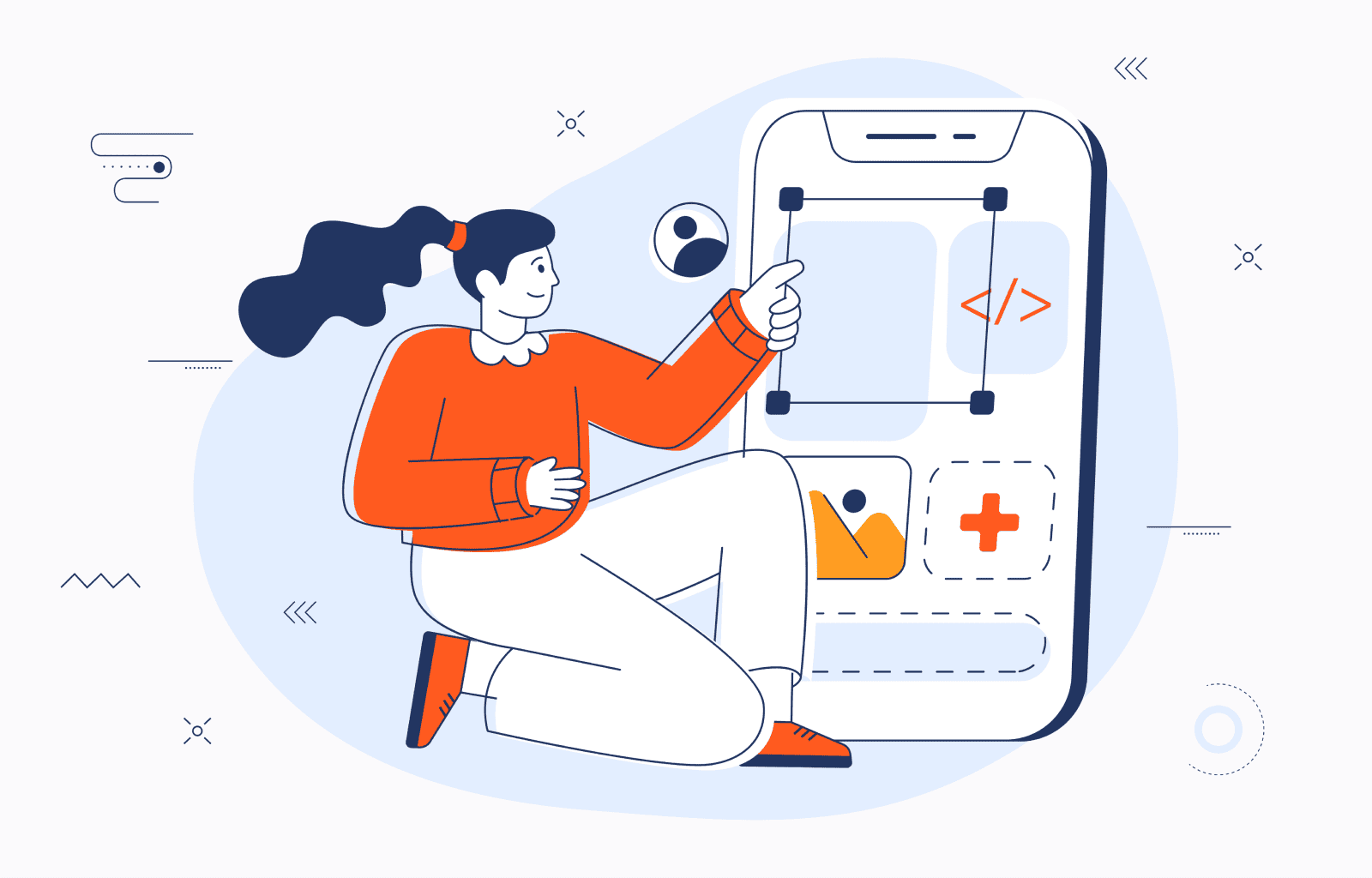How to Hire UI/UX Designers and Avoid Costly Product Design Mistakes

Too many companies focus on making things look good instead of making them work. When businesses overlook usability, they experience higher churn rates, missed conversions, and costly redesigns. That’s the cost of bad UX design.
Too many companies focus on making things look good instead of making them work. When businesses overlook usability, they experience higher churn rates, missed conversions, and costly redesigns. That’s the cost of bad UX design.
This post is here to help you avoid that. We’ll show you how to hire UI UX designer who goes beyond the visuals. The right person aligns design with business goals, understands user behavior, and creates experiences that feel effortless and intuitive.
Common Design “Issues” That Cost You More Than You Think
When the design falls short, the impact adds up quickly. People leave your app. Reviews take a hit. Your team scrambles to fix what should’ve worked from the start, and those fixes aren’t cheap. That’s why you need UX designers for hire who understand both your users and your business.
We’ll walk through some common UI/UX mistakes that quietly eat away at your time, budget, and user trust.
01.Beautiful Design Without Business Functionality
Imagine a landing page so gorgeous it could win awards—but your users can’t figure out what your product actually does or how to sign up. That’s a classic case of design that looks great on Dribbble but doesn’t support real user goals. When UI/UX isn’t tied to your business objectives, it’s just decoration. And that’s not what drives conversions or customer loyalty.
02.Confusing Navigation or Overwhelming UI
Ever opened an app and felt like you needed a manual to use it? When navigation is cluttered, buried, or simply confusing, users tend to leave quickly. The same applies to overly complex dashboards or interfaces that attempt to do too much at once. Good design should guide people, not confuse them. If users can’t find what they need in a few taps or clicks, they’ll find it somewhere else.
03.Lack of Accessibility or Responsiveness
Today’s users are everywhere—on phones, tablets, desktops, and with different levels of ability. If your product doesn’t adapt across devices or isn’t built with accessibility in mind, you’re not just alienating users—you’re potentially losing a big slice of your market. Plus, fixing accessibility after launch is an avoidable headache if you have the right designer on board from the start.
04.Poor User Onboarding
You’ve got a great product... but users drop off before they even finish signing up. Why? Because your onboarding experience didn’t help them understand the value fast enough. Onboarding is your product’s first impression—it needs to be clear, helpful, and aligned with what users actually want to achieve. If it’s confusing or too long, they’re gone.
05.Design Inconsistency Across Platforms
Your mobile app looks one way, your web version looks completely different, and the experience on tablets is something else entirely. Sound familiar? Inconsistent design across platforms breaks trust. Users expect a seamless journey wherever they access your product. When that consistency is missing, it feels unprofessional, and it makes your product harder to maintain.
What to Look For When You Hire UI/UX Designers
Choosing between freelance vs in-house UX designers is only part of the equation. What really matters is whether your product design team roles are filled by people who think beyond the visuals. The right designer will care about how your product works, how users move through it, and how design drives results.
To help you make the right call, here are some practical UX recruitment tips to guide your search.
A user-first mindset and real problem-solving skills. Good design isn’t just about clean layouts. The right designer starts with the user—thinking through friction points, mapping out solutions, and creating flows that feel effortless and intuitive.
Experience with user research and usability testing. Design decisions shouldn’t rely on hunches. Strong candidates will know how to talk to users, run usability tests, and turn feedback into smarter, data-backed design choices.
The ability to create user journeys, wireframes, and prototypes. Before any visuals come in, great designers map out how users move through your product. They know how to turn loose ideas into clickable prototypes your team can test and improve.
An understanding of accessibility and responsive design. Design should work for everyone, on any device. Look for someone who considers accessibility from day one and knows how to design for real-world conditions, not just ideal screens.
Fluency with modern design tools. Whether it’s Figma, Sketch, or AI-powered prototyping platforms, your designer should be comfortable using tools that speed up collaboration and keep workflows smooth across teams.
Comfort working with dev teams. UI/UX isn’t a solo act. Designers need to speak the same language as your frontend and backend developers so nothing gets lost between the design file and the final build.
A portfolio that shows real outcomes. A thorough UI/UX portfolio evaluation goes beyond slick visuals. Ask for case studies that explain the problem, the approach, and the end result—so you know they can actually move the needle, not just make it pretty.
Why Good Design Is a Long-Term Investment
Think of great UI/UX design as the foundation on which your product stands. It takes a bit more time and intention up front, but it saves you from endless rework and keeps things running smoothly as you scale.
When design is done right from the start, your team spends less time patching usability issues or rebuilding features users didn’t even want. That means fewer delays, a cleaner launch, and lower dev costs.
It also makes your product stickier. Users stay longer, engage more, and are more likely to return when the experience just makes sense. That means higher retention, fewer support tickets, and more trust in your brand.
On the flip side, fixing design problems after launch is a slow, expensive process—and it usually comes after users have already started walking away.
Avoiding mistakes when hiring designers is what sets you up for success. With the right person on board early, you’ll cut down on costly revisions and build something people actually want to use. It’s not just a design decision. It’s a smart investment.
Final Thoughts
Design isn’t just about appearance—it’s about how your product functions in the hands of real users. Get it right, and you create something that feels intuitive from the first tap. Get it wrong, and users quietly drop off without a second thought.
That’s why it matters who you bring on board. When you hire UI UX designer who understands your users, your goals, and how to bridge the gap between them, you avoid the costly missteps that stall growth and drain resources.
Take the time, ask smart questions, and look for more than just a polished portfolio. The right designer can shape not just your interface but your entire product experience.
Need help finding UX designers who actually get product strategy? At Integrio, we build digital products with design that works—and works hard. Let’s talk.
Contact us

